Three homeowners in the Vista Irrigation District won recognition recently from the VID board of directors in its 2021 WaterSmart Landscape Contest.
The annual contest recognizes outstanding water-wise residential landscapes based on overall attractiveness, appropriate plant selection, design, appropriate maintenance, and efficient irrigation methods.
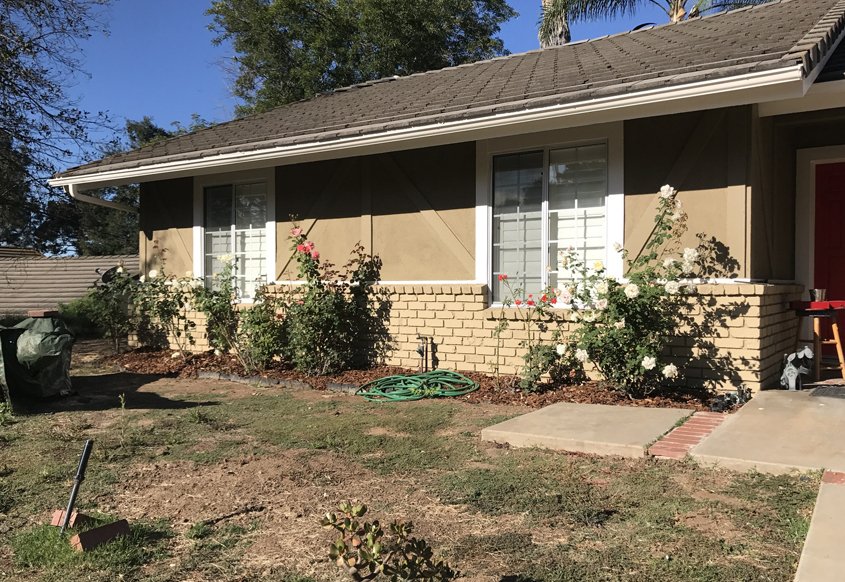
Lauren Grey’s landscaping before its winning makeover. Photo: Vista Irrigation District
Winning plan solves erosion problem with beautiful blooms
The “Best in District” award went to Lauren Grey. What started as a project to halt the rush of soil down a steep front slope turned into a multi-hued garden with a view from the top. Grey renovated her front slope and landscape by installing retaining walls surrounded by beds of colorful blooms. She lined the staircase zigzagging through the hillside with a variety of potted succulents. Bright orange poppies, lush green jade, silvery Ghost Plants, and Purple Heart Tradescantia dot the slope.
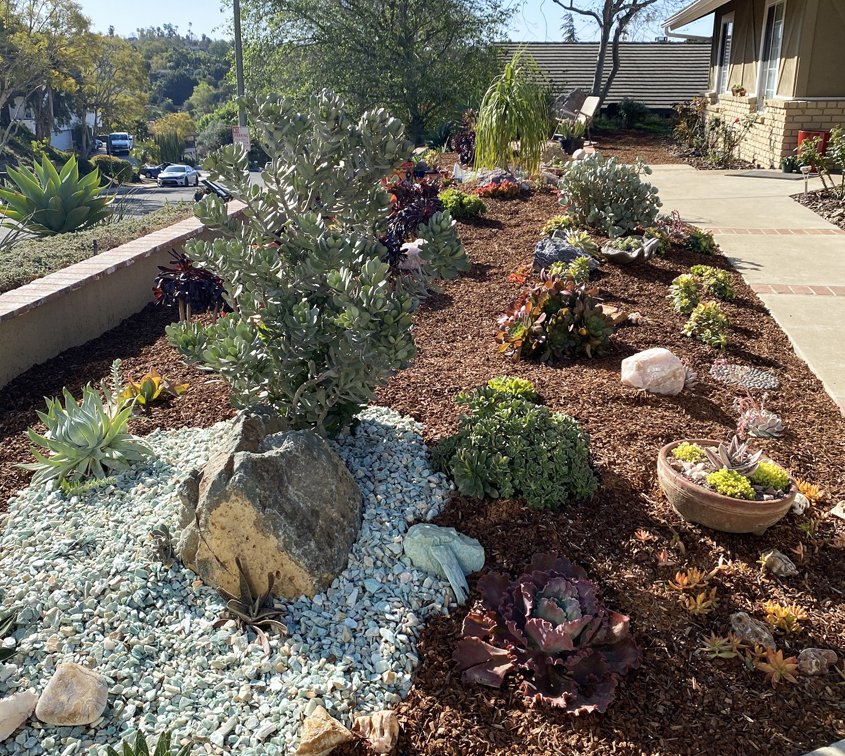
Lauren Grey’s landscaping solved her problems with a troublesome slope. Photo: Vista Irrigation District
The winning result is an explosion of color. “What fun to have a beautiful garden and a sweet place to sit and contemplate it all!” said Grey.
“With rebates available for turf removal, now is a great time to replace your lawn with a beautiful WaterSmart landscape,” said Brent Reyes, VID water conservation specialist.
Drought-tolerant results receive recognition
Homeowners Deborah Brandt and Dorothy Wagemester received honorable mentions for their outstanding projects.
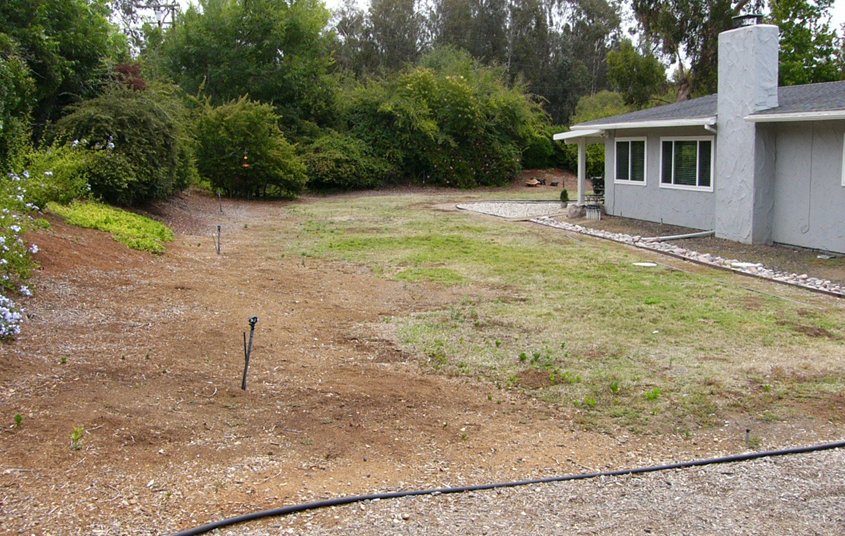
The “before” look at the Wagemester landscaping. Photo: Vista Irrigation District
The Wagemesters wanted to conserve water and create an inviting natural haven on their property. A meandering hardscape pathway lined with a vibrant palette of drought-tolerant choices, including bougainvillea, trailing buttercups, sea lavender, and Cape plumbago replaced turf with a native garden.

The Wagemester home’s attractive new waterwise landscaping. Photo: Vista Irrigation District
Magenta blooms of an Eastern Redbud tree pop against foxtail agaves and Kaleidoscope Abelia.
“While spring is our favorite season, we now have color all year long,” said Dorothy Wagemester.
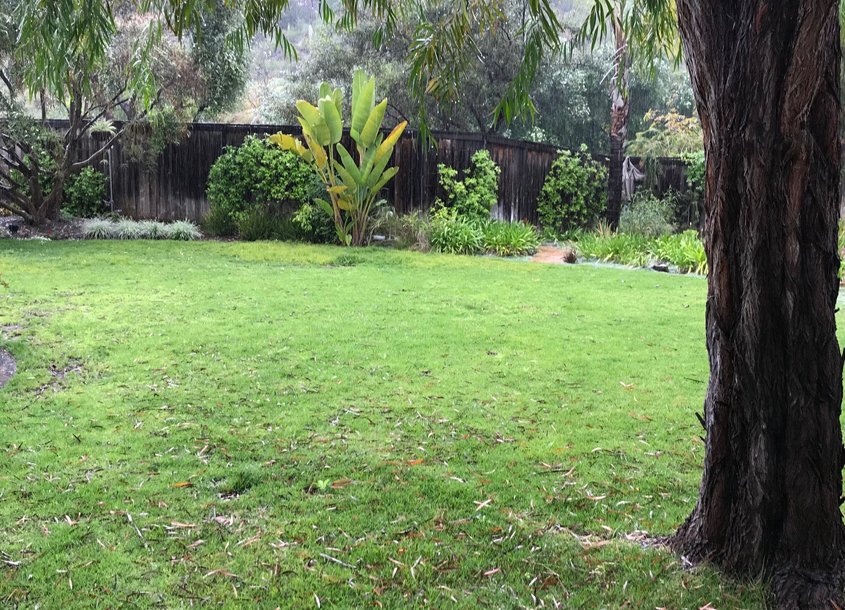
Deborah Brandt’s landscaping before its makeover. Photo: Vista Irrigation District
Brandt wanted to transform her plain backyard into a magical place. She started with river rock and added cactus and succulents in multiple shapes and sizes. Over time, she mixed in yard art and chimes, creating charming surprises. Brandt installed drip irrigation and two rain barrel water collection systems to reduce her water use.
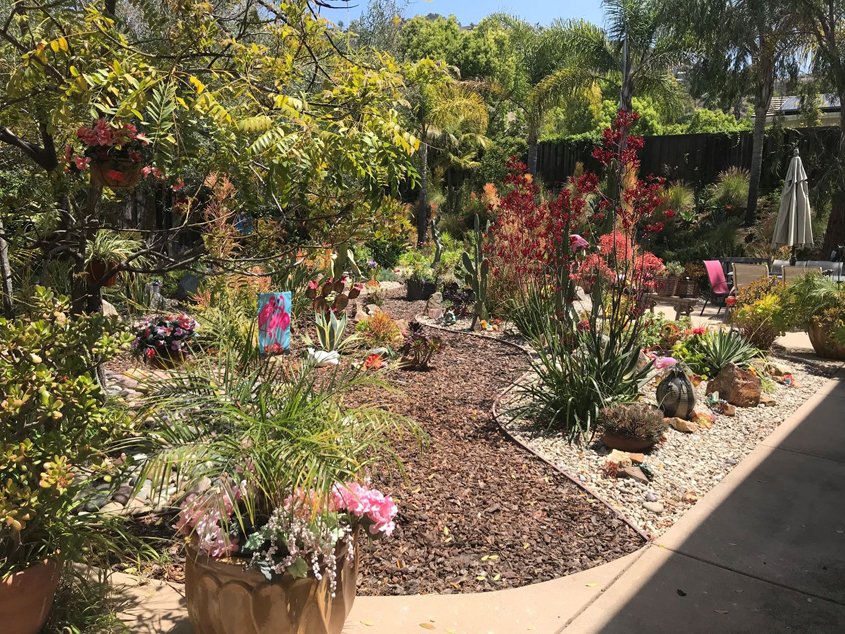
The Brandt home with its new drought-tolerant landscaping. Photo: Vista Irrigation District
Brandt “gave away the lawnmower” due to the transformation into a low-maintenance, WaterSmart paradise where flowers bloom year-round.
(Editor’s note: The Vista Irrigation District is one of the San Diego County Water Authority’s 24 member agencies that deliver water across the metropolitan San Diego region.)










